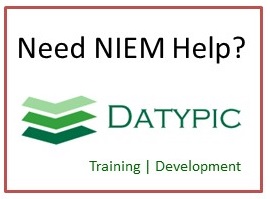gml:TimeTopologyComplex
A temporal topology complex shall be the connected acyclic directed graph composed of temporal topological primitives, i.e. time nodes and time edges. Because a time edge may not exist without two time nodes on its boundaries, static features have time edges from a temporal topology complex as the values of their temporal properties, regardless of explicit declarations. A temporal topology complex expresses a linear or a non-linear graph. A temporal linear graph, composed of a sequence of time edges, provides a lineage described only by "substitution" of feature instances or feature element values. A time node as the start or the end of the graph connects with at least one time edge. A time node other than the start and the end shall connect to at least two time edges: one of starting from the node, and another ending at the node. A temporal topological complex is a set of connected temporal topological primitives. The member primtives are indicated, either by reference or by value, using the primitive property.
Element information
Namespace: http://www.opengis.net/gml/3.2
Schema document: external/ogc/gml/3.2.1/temporalTopology.xsd
Type: gml:TimeTopologyComplexType
Properties: Global, Qualified
Content
- Sequence [1..1]
- gml:metaDataProperty [0..*]
- gml:description [0..1]The value of this property is a text description of the object. gml:description uses gml:StringOrRefType as its content model, so it may contain a simple text string content, or carry a reference to an external description. The use of gml:description to reference an external description has been deprecated and replaced by the gml:descriptionReference property.
- gml:descriptionReference [0..1]The value of this property is a remote text description of the object. The xlink:href attribute of the gml:descriptionReference property references the external description.
- gml:identifier [0..1]Often, a special identifier is assigned to an object by the maintaining authority with the intention that it is used in references to the object For such cases, the codeSpace shall be provided. That identifier is usually unique either globally or within an application domain. gml:identifier is a pre-defined property for such identifiers.
- gml:name [0..*]The gml:name property provides a label or identifier for the object, commonly a descriptive name. An object may have several names, typically assigned by different authorities. gml:name uses the gml:CodeType content model. The authority for a name is indicated by the value of its (optional) codeSpace attribute. The name may or may not be unique, as determined by the rules of the organization responsible for the codeSpace. In common usage there will be one name per authority, so a processing application may select the name from its preferred codeSpace.
- gml:primitive [1..*]
from type gml:AbstractGMLTypefrom group gml:StandardObjectProperties
Attributes
| Name | Occ | Type | Description | Notes |
|---|---|---|---|---|
| gml:id | [1..1] | xsd:ID | The attribute gml:id supports provision of a handle for the XML element representing a GML Object. Its use is mandatory for all GML objects. It is of XML type ID, so is constrained to be unique in the XML document within which it occurs. | from type gml:AbstractGMLType |
Used in
- Group gml:Value
- Type gml:ArrayAssociationType (Element gml:members)
- Type gml:DomainSetType (Elements gml:domainSet, gml:multiPointDomain, gml:multiCurveDomain, gml:multiSurfaceDomain, gml:multiSolidDomain, gml:gridDomain, gml:rectifiedGridDomain)
- Type gml:TimeTopologyComplexPropertyType
- Type gml:ValueArrayPropertyType via reference to gml:Value (Element gml:valueComponents)
- Type gml:ValuePropertyType via reference to gml:Value (Elements gml:valueProperty, gml:valueComponent)
Substitution hierarchy
- gml:AbstractObject
- can be substituted with gml:AbstractGML
- can be substituted with gml:AbstractTimeObject
- can be substituted with gml:AbstractTimeComplex
- can be substituted with gml:TimeTopologyComplex
- can be substituted with gml:AbstractTimeComplex
- can be substituted with gml:AbstractTimeObject
- can be substituted with gml:AbstractGML
Sample instance
<gml:TimeTopologyComplex gml:id="ID"> <gml:metaDataProperty> <gml:GenericMetaData>Any text, intermingled with: <!--any element--> </gml:GenericMetaData> </gml:metaDataProperty> <gml:description>string</gml:description> <gml:descriptionReference/> <gml:identifier codeSpace="http://www.example.com/">string</gml:identifier> <gml:name>string</gml:name> <gml:primitive> <gml:TimeNode gml:id="ID"> <gml:metaDataProperty>... </gml:metaDataProperty> <gml:description>string</gml:description> <gml:descriptionReference/> <gml:identifier codeSpace="http://www.example.com/">string</gml:identifier> <gml:name>string</gml:name> <gml:relatedTime>... </gml:relatedTime> <gml:complex/> <gml:previousEdge>... </gml:previousEdge> <gml:nextEdge>... </gml:nextEdge> <gml:position>... </gml:position> </gml:TimeNode> </gml:primitive> </gml:TimeTopologyComplex>



